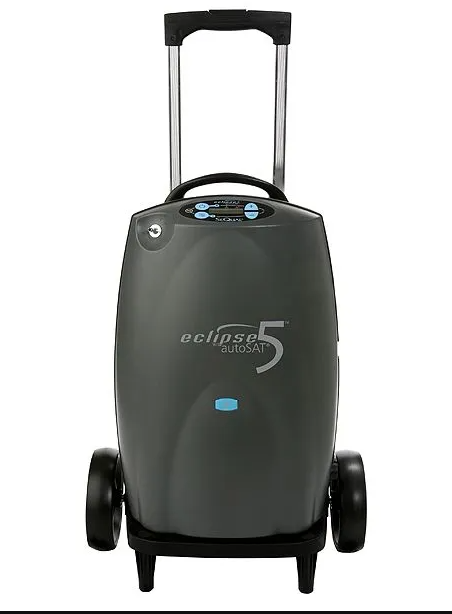Getting The Portable Oxygen Concentrators To Work
Table of ContentsThe Basic Principles Of Portable Oxygen Concentrators Not known Factual Statements About Portable Oxygen Concentrators 6 Simple Techniques For Portable Oxygen ConcentratorsThe Single Strategy To Use For Portable Oxygen Concentrators
Stationary oxygen concentrators were once the criterion, however these containers can weigh 50 pounds and were very difficult (Portable Oxygen Concentrators). Currently, mobile oxygen concentrators get the task done, and they can suit a bag or purse! The only thing you need to remember is that portable concentrators have more minimal oxygen distribution capacitiesThere are 2 major types of portable oxygen concentrators: pulse dosage and continuous circulation. As the name recommends, pulse dosage concentrators provide oxygen intermittently, just turning on when you inhale. This kind of device is normally suggested for COPD people with minimal oxygen requirements, as the quantity of O2 that a pulse dose concentrator can provide is relatively low.
This device can supply up to 3,000 m, L of oxygen every minute, while pulse dosage devices tend to top out at 1250 m, L. Continuous circulation tools are the go-to for most COPD patients, as they're excellent for individuals that require two to 5 litres of oxygen a minute.
Currently that you have this overview to the different kinds of mobile oxygen machines, pick the finest tool with the help of your doctor.
Not known Incorrect Statements About Portable Oxygen Concentrators
We know Americans utilize residential variations in home care situations. We asked yourself just how well these portable oxygen concentrators would function in healthcare facilities. POC concentrators boost the proportion of oxygen in ambient air people take in, whenever they require an increase. Private-use ones are small sufficient to bring about, and may help prevent the need to check out busy centers and medical facilities.
When it involves mobile oxygen treatment, there are 2 main alternatives for distribution. These are mobile oxygen cyndrical tubes which have compressed oxygen gas, or oxygen concentrators, which make use of a battery powered system to compress and filter air, in order to develop a consistent supply of focused oxygen. In this article, AMS Compound Cylinders Technical Supervisor, Tony Morrin, contrasts both, checking out the pros and cons of each oxygen shipment system for NHS medical oxygen customers in regards to client autonomy.

Portable Oxygen Concentrator Oxygen purity is regularly greater when supplied from cyndrical tubes it never drops below 99. 6%, regardless of the circulation price needed. In battery-powered concentrators, pureness is impacted by flow rate, and may be 90% or much less, depending on the devices. Whilst oxygen concentrators can be valuable for individuals that call for a reduced circulation of oxygen, cylinders give greater concentrations that can be better for individuals with high flow needs.
The Of Portable Oxygen Concentrators
Both systems require the patient to bring about equipment. For cylinders, this will consist of lugging a bag (and periodically a cart) and for mobile oxygen concentrators this will consist of the bag, cart and power charger. Weight sensible, portable oxygen concentrators can be equivalent get redirected here in weight, or sometimes, lighter than traditional aluminium cylinder systems.
They will have to improve considerably if they are to give the exact same degree of performance as comparable composite cyndrical tubes. Oxygen constantly carries a safety danger. On one hand, should cylinders spring a leak, they can create an oxygen rich environment that could bring about a boost in fire risk.

The difference is that there are substantial in advance prices to buying a mobile oxygen concentrator, however lower running expenses using cylinders makes it possible for the buyer to spread the expense over Click This Link a prolonged duration of time. One small disadvantage of a mobile oxygen concentrator is the sound mobile systems make a considerable amount of noise during procedure, which numerous individuals locate disruptive.
Portable Oxygen Concentrators for Beginners

Our top notch carbon composite cylinders provide high pressure (300 Bar), reduced weight, and NLL (Non-Limited Life) efficiency, and are recognized for use worldwide. Additional info about AMS Composite Cylinders Ltd can be discovered at .
Oxygen concentrators are developed with user wheelchair in mind. Whether it's a desktop variation for home use or a smaller sized, lightweight version for on-the-go, these devices allow patients to move freely without being connected to a fixed device. Particularly for the ones especially developed for portability, clients can bring them around, promoting travel and daily tasks easily.
Among the significant eases of making use of an oxygen concentrator is the elimination of the constant need to re-fill oxygen tanks. This not only reduces the logistical challenges and persistent costs connected with refills yet also makes sure that the individual has a more foreseeable and consistent source of oxygen. Oxygen concentrators are developed to fit perfectly into the home setting.